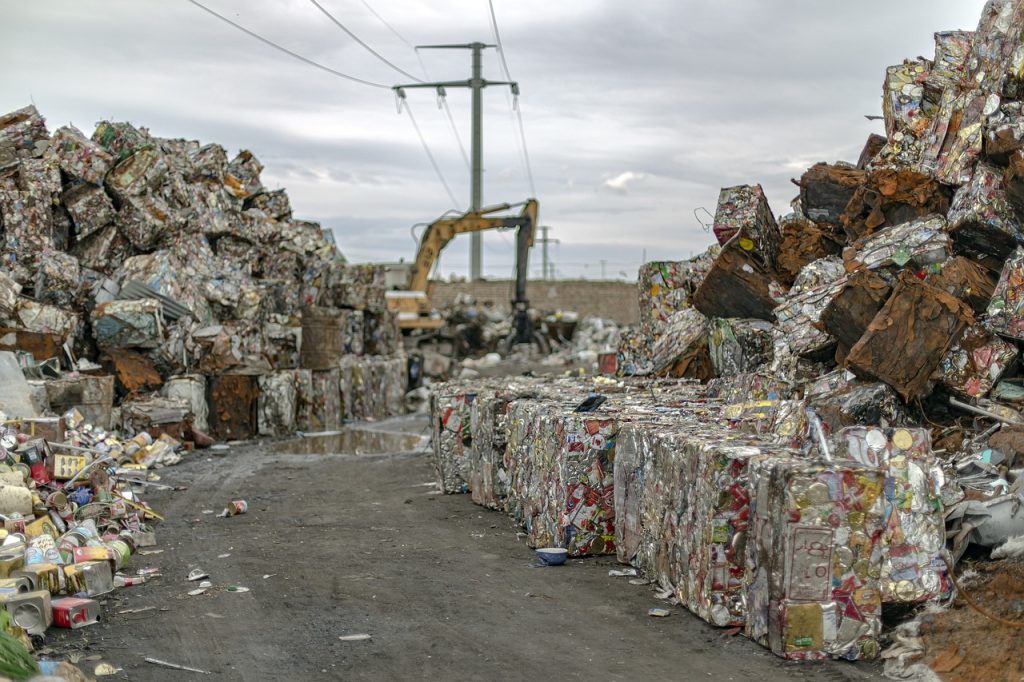Recycling and waste management are integral parts of environmental stewardship, playing a critical role in preserving our planet for future generations. As the global population grows and consumerism increases, the amount of waste generated also escalates, making efficient waste management and recycling more important than ever.
The Environmental Impact of Waste
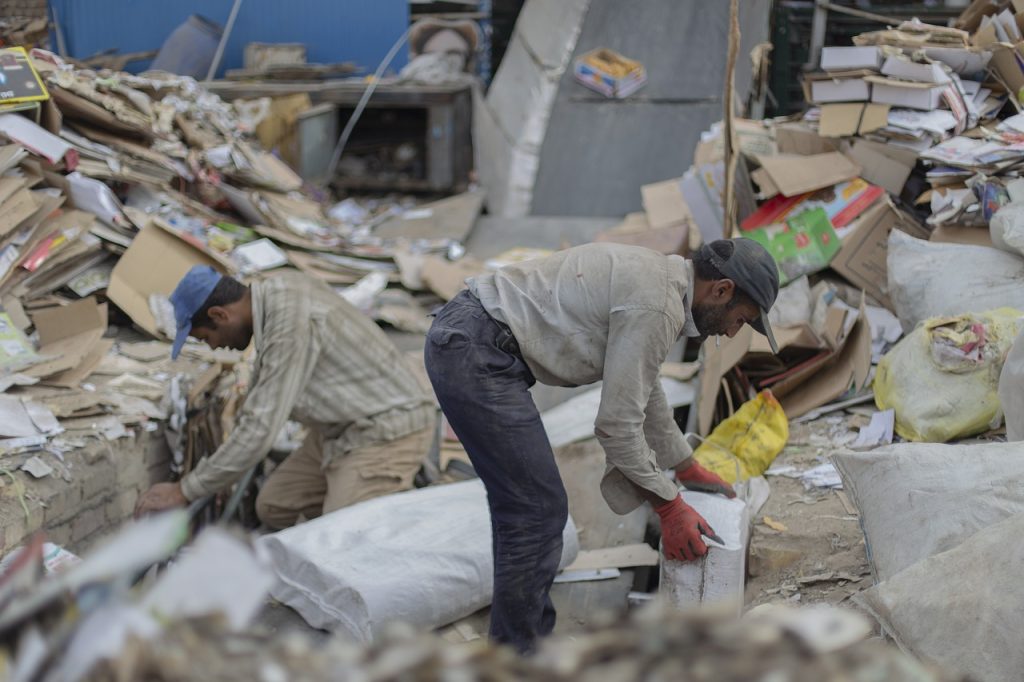
The environmental impact of waste is profound and multifaceted, affecting air, water, soil, and ecosystems around the globe. As societies continue to produce vast amounts of waste, the need to address the environmental consequences of this waste becomes increasingly critical.
Pollution of Land and Water
One of the most visible impacts of waste is the pollution it causes. Landfills, which are the most common method of waste disposal, can leach hazardous substances into the soil and groundwater. These contaminants can then enter the food chain, affecting wildlife and human health. Furthermore, when waste is not properly managed, it can end up in oceans and rivers, leading to water pollution that harms aquatic life and disrupts ecosystems.
Greenhouse Gas Emissions
Waste contributes significantly to greenhouse gas emissions, particularly methane, a potent greenhouse gas released during the decomposition of organic waste in landfills. These emissions contribute to global warming and climate change, leading to severe weather events, rising sea levels, and other environmental impacts that threaten biodiversity, human health, and the economy.
Resource Depletion
The production of new products and materials consumes natural resources and energy, leading to resource depletion. Waste exacerbates this issue when recyclable materials are discarded instead of being reused or recycled. By failing to recycle, we miss the opportunity to conserve resources and reduce the demand for raw materials, further straining our planet’s limited resources.
Impact on Biodiversity
Waste can also have a direct impact on biodiversity. Wildlife, both on land and in the oceans, is at risk from waste pollution. Animals can ingest or become entangled in waste, leading to injury, illness, or death. Moreover, waste disposal and the resulting habitat destruction can lead to the loss of biodiversity, as species lose their habitats and face greater competition for resources.
Types of Recyclable Materials

Recycling is a key component of modern waste reduction and environmental sustainability. By understanding and correctly sorting recyclable materials, we can significantly reduce the amount of waste sent to landfills and conserve natural resources. Here are the main types of materials that can be recycled, each with its own process for recycling.
Paper and Cardboard
Paper includes items such as newspapers, magazines, office paper, and notebooks. Recycling paper saves trees and water, reduces greenhouse gas emissions, and requires less energy than making paper from virgin timber.
Cardboard is one of the most widely recycled materials. Corrugated boxes, packaging, and other cardboard products can be broken down and reformed into new cardboard and paper goods, reducing the need for new raw materials.
Plastics
Plastics are categorized by their resin identification codes, numbered 1 through 7, each representing a different type of plastic. The most commonly recycled plastics are:
PET (Polyethylene Terephthalate): Used in water bottles and many containers. It can be recycled into new bottles and polyester fiber.
HDPE (High-Density Polyethylene): Found in milk jugs, detergent bottles, and some plastic bags. HDPE can be recycled into more bottles, piping, and plastic lumber.
Plastics #3 – #7 vary in recyclability and are used in various products from food wrappers to straws. Recycling options for these plastics are more limited due to their composition and lower demand in the recycling market.
Metals
Aluminum: Commonly used in beverage cans, aluminum is highly recyclable and can be reprocessed into new cans and other products indefinitely without loss of quality.
Steel: Found in food cans, appliances, and construction materials. Steel is the most recycled material on earth and can be melted down and reused in new steel products.
Glass
Glass bottles and jars can be recycled repeatedly without loss of purity or quality. Recycled glass is melted down and reformed into new glass products, saving energy and raw materials. However, not all glass (like windows, mirrors, or glassware) is recyclable through curbside programs due to differences in chemical compositions.
Electronics (E-Waste)
Electronic waste includes computers, smartphones, televisions, and other electronic devices. These materials require specialized recycling processes to recover valuable metals (like gold, silver, and copper), plastics, and other materials while safely disposing of hazardous substances.
Textiles
Textiles, including clothes, towels, and bedding, can be recycled or repurposed. While textile recycling is less common in curbside programs, many organizations and drop-off centers accept textiles for recycling or donation.
Recycling these materials plays a crucial role in environmental conservation, reducing the need for raw materials, conserving energy, and decreasing greenhouse gas emissions. By participating in recycling programs and being mindful of what materials can be recycled, individuals can make a significant impact on the environment.
The Recycling Process

The recycling process is a series of steps that takes materials from the waste stream and convert them into usable products, conserving resources and reducing the amount of waste sent to landfills. This process varies depending on the material being recycled but generally follows these key stages:
Collection and Sorting
Collection: Recycling begins with the collection of materials from households, businesses, and recycling centers. This can be done through curbside pickup programs, drop-off centers, or deposit/refund programs.
Sorting: Once collected, the materials are transported to recycling facilities where they are sorted by type and quality. Advanced sorting facilities use a combination of manual labor and technologies such as infrared sensors and air jets to efficiently sort materials.
Cleaning and Processing
Cleaning: Recyclable materials are cleaned to remove any contamination (food waste, labels, adhesives, etc.). This step is crucial for ensuring the quality of the final recycled product.
Processing: After cleaning, materials are processed and transformed into a form that can be used to manufacture new products. For example, paper is pulped, plastics are shredded into flakes or pellets, and metals are melted down.
Manufacturing
Recycled Material Transformation: The processed materials are then transported to manufacturers who use these materials to produce new products. Recycled paper becomes new paper products, plastic flakes are transformed into containers or textile fibers, and melted metals are cast into new items.
Integration into New Products: Recycled materials often replace or reduce the need for virgin materials in manufacturing processes. This not only conserves natural resources but also requires less energy, contributing to a reduction in greenhouse gas emissions.
The Role of Consumers
The recycling process doesn’t end with the manufacture of new products. Consumers play a crucial role by purchasing products made from recycled materials, thereby completing the recycling loop. This demand encourages companies to continue using recycled materials and invest in more sustainable production practices.
Challenges in the Recycling Process
Despite its benefits, the recycling process faces several challenges, including:
Contamination: Non-recyclable items mixed with recyclables can contaminate entire batches, making them unsuitable for recycling.
Market Demand: The demand for certain recycled materials fluctuates, which can affect the viability of recycling certain items.
Technical Limitations: Some materials degrade in quality each time they are recycled, or they may be difficult to recycle efficiently due to their composition.
Challenges in Recycling and Waste Management
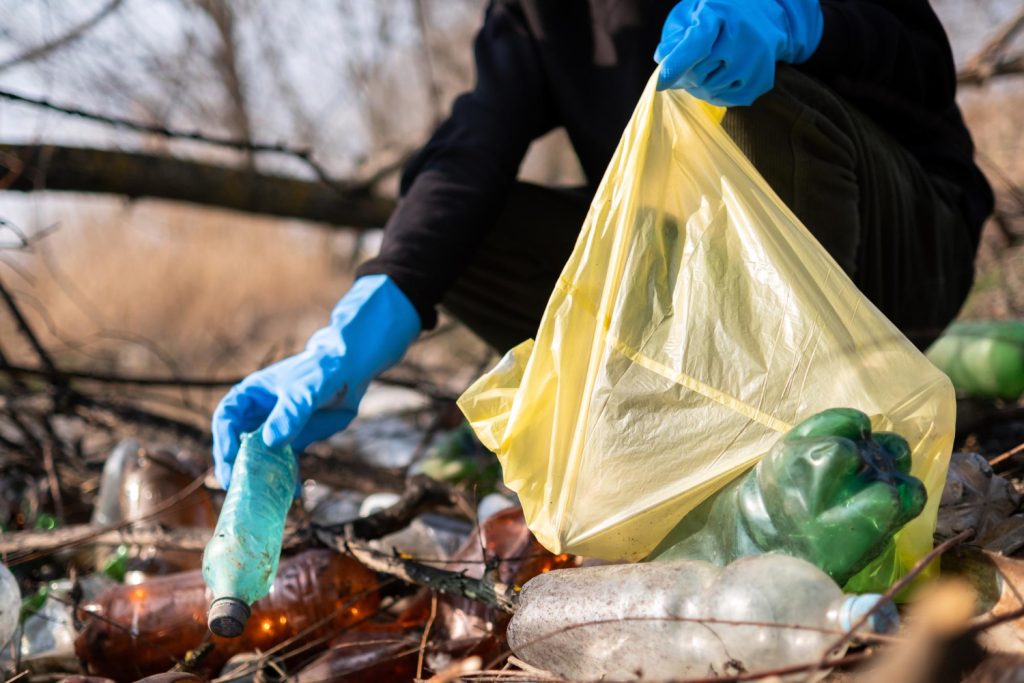
While recycling and waste management are crucial for environmental sustainability, several challenges hinder their effectiveness. These obstacles range from technical and economic issues to social and policy-related factors. Addressing these challenges is essential for improving recycling rates and enhancing waste management practices globally.
Contamination of Recyclable Materials
One of the most significant challenges in recycling is contamination. When non-recyclable items or materials covered in food waste are mixed with recyclables, they can contaminate the whole batch, making it difficult or impossible to process. This not only reduces the quality of recycled materials but also increases the cost of recycling.
Non-recyclable and Composite Materials
Many products are made from composite materials or contain components that are difficult to separate and recycle. For example, certain types of plastic packaging, multi-layer materials, and small electronics are challenging to process using current recycling technologies. This limits the amount of waste that can be effectively recycled and increases the volume of waste sent to landfills.
Lack of Public Awareness and Participation
Effective recycling requires participation from individuals, businesses, and governments. Lack of awareness about what can and cannot be recycled often leads to low recycling rates and high contamination levels. Educating the public about the importance of recycling and how to recycle correctly is crucial for overcoming this challenge.
Inadequate Recycling Infrastructure
In many regions, the recycling infrastructure is insufficient to handle the volume and variety of recyclable materials. This includes a lack of collection services, sorting facilities, and processing plants. Without the necessary infrastructure, even materials that are technically recyclable may end up in landfills.
Economic Challenges
Recycling can be economically challenging, especially when the cost of collecting, sorting, and processing recyclables is higher than the value of the recycled materials. Market fluctuations can also affect the demand for recycled materials, making it financially unviable for recycling operations to continue without subsidies or support.
Regulatory and Policy Barriers
The effectiveness of recycling and waste management programs is often influenced by government policies and regulations. Inconsistent or lacking regulations can lead to inefficiencies and disparities in recycling efforts. Additionally, the absence of incentives for recycling or the production of recyclable and sustainable products can impede progress in waste management.
Global Inequalities
There are significant disparities in recycling and waste management capabilities between developed and developing countries. While some countries have advanced recycling systems, others lack the resources and infrastructure to manage waste effectively. This global inequality contributes to environmental degradation and complicates efforts to address waste management on a global scale.
Technological Advances in Recycling

The recycling industry has seen significant technological advances in recent years, aimed at overcoming challenges such as contamination, inefficiency, and the processing of complex materials. These innovations not only enhance the effectiveness of recycling processes but also contribute to the development of a more sustainable and circular economy. Here are some of the key technological advances in recycling:
Automated Sorting Systems
Advancements in sorting technology have greatly improved the efficiency and accuracy of the recycling process. Automated sorting systems use sensors, robotics, and artificial intelligence (AI) to identify and separate recyclable materials by type and composition. These systems can process large volumes of waste more quickly and accurately than manual sorting, reducing contamination and increasing the amount of materials that can be recycled.
Advanced Materials Processing
New technologies in materials processing are enabling the recycling of previously non-recyclable materials. Innovations such as chemical recycling break down plastics at the molecular level, allowing them to be reformed into new plastics without degrading quality. This process can extend the lifecycle of plastic materials and reduce reliance on virgin plastics.
Enhanced E-Waste Recycling
Electronic waste (e-waste) is one of the fastest-growing waste streams, posing significant environmental and health risks. Technological advances in e-waste recycling, including more efficient methods of extracting valuable metals and components, are making it easier and more cost-effective to recycle electronics. These technologies not only recover precious resources but also prevent hazardous materials from contaminating the environment.
Biodegradable and Recyclable Material Development
Research and development efforts are also focused on creating new materials that are easier to recycle or biodegrade. For example, the development of bioplastics from renewable sources offers a more sustainable alternative to traditional plastics. Similarly, innovations in packaging design are aimed at reducing the use of mixed materials that are difficult to recycle, such as multi-layered packaging, and replacing them with easily recyclable or compostable options.
Blockchain for Recycling
Blockchain technology is being explored as a way to improve transparency and efficiency in the recycling supply chain. By tracking the lifecycle of recyclable materials, blockchain can provide verifiable data on the origin, recycling process, and final destination of materials. This can help reduce contamination, ensure compliance with recycling standards, and encourage responsible sourcing and recycling practices.
Energy Recovery and Waste-to-Energy Technologies
While not recycling in the traditional sense, energy recovery from waste is an important component of waste management. Advances in waste-to-energy technologies, such as anaerobic digestion and gasification, allow for the conversion of waste into energy, reducing landfill use and providing a renewable energy source.
Global Recycling Efforts
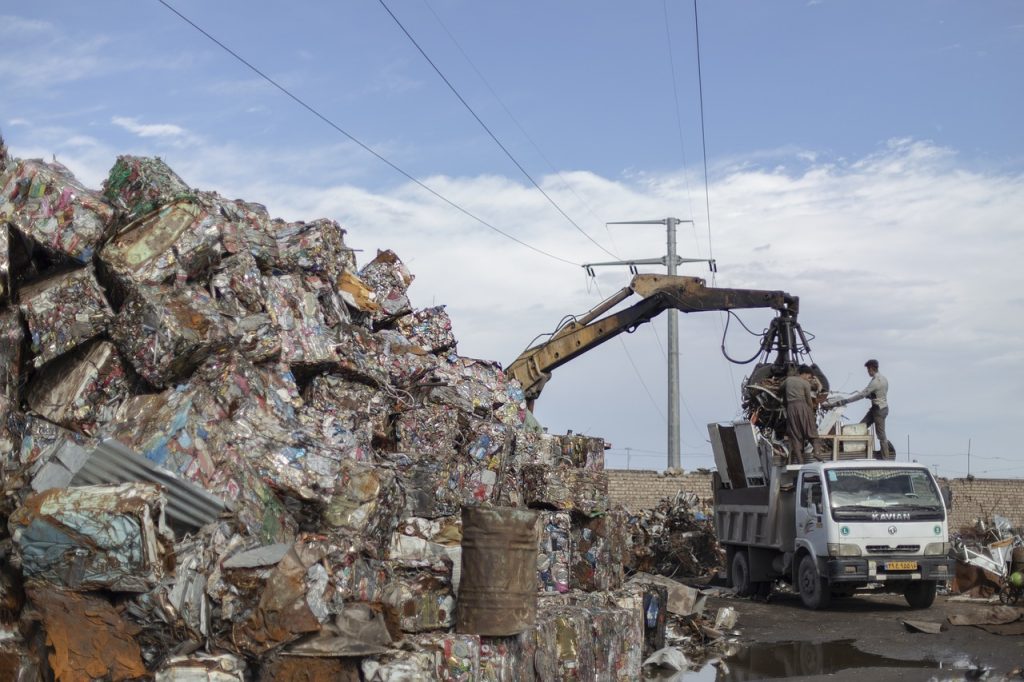
The global approach to recycling and waste management reflects a diverse landscape of policies, technologies, and initiatives. Countries around the world are adopting various strategies to increase recycling rates, reduce waste, and mitigate environmental impact. These efforts are crucial in addressing the global challenge of waste management and promoting a sustainable future. Here’s a look at some of the global recycling efforts and their impacts:
European Union: Leading by Policy
The European Union (EU) is at the forefront of recycling efforts, driven by ambitious policies and directives. The EU’s Circular Economy Action Plan and the Waste Framework Directive set stringent recycling targets for member states, aiming to promote waste reduction, reuse, and recycling. The EU has also implemented the Extended Producer Responsibility (EPR) principle, which holds producers accountable for the end-of-life management of their products, encouraging the design of more recyclable products and packaging.
Japan: Pioneering the 3Rs
Japan is known for its efficient waste management and recycling systems, guided by the principle of the 3Rs: Reduce, Reuse, and Recycle. The country has one of the highest recycling rates globally, thanks to comprehensive waste separation rules, extensive collection services, and the promotion of recycling at the community level. Japan’s Home Appliance Recycling Law and Container and Packaging Recycling Law are examples of regulatory measures that have significantly contributed to its recycling success.
South Korea: From Waste Crisis to Recycling Leader
South Korea transformed its waste management system from a waste crisis in the 1990s to becoming a recycling leader. Through the implementation of volume-based waste fee systems and mandatory recycling regulations, South Korea has dramatically increased its recycling rates. The country also invests in advanced recycling technologies and infrastructure, further enhancing its waste management capabilities.
Scandinavian Countries: Innovation and Sustainability
Scandinavian countries like Sweden, Denmark, and Norway are renowned for their innovative and sustainable approaches to recycling and waste management. These countries have achieved high recycling rates through a combination of policies, public awareness campaigns, and cutting-edge technologies, including waste-to-energy plants that convert non-recyclable waste into heat and electricity. Their commitment to environmental sustainability serves as a model for other nations.
United States: A Mixed Picture
The recycling landscape in the United States is varied, with recycling rates and policies differing significantly across states and municipalities. While some cities and states have implemented progressive recycling programs and policies, the overall national recycling rate remains relatively low compared to other developed countries. Efforts to improve recycling in the U.S. include increasing access to recycling services, enhancing public education on recycling, and investing in recycling infrastructure.
Developing Countries: Emerging Efforts and Challenges
Many developing countries face significant challenges in waste management and recycling due to limited infrastructure, financial resources, and public awareness. However, there are emerging efforts to improve recycling through partnerships with international organizations, implementation of community-based recycling programs, and the adoption of informal recycling sectors into formal waste management systems.
The Importance of Individual Action
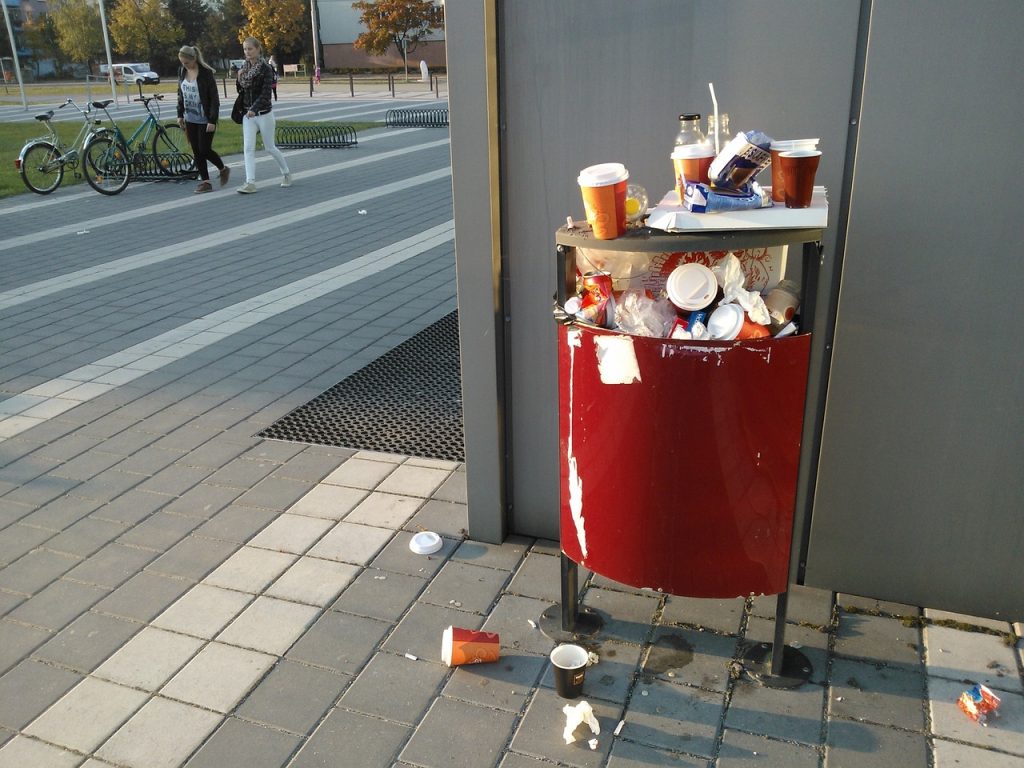
In the global effort to tackle waste and enhance recycling, the role of individual action cannot be overstated. While policies, technologies, and large-scale initiatives are crucial, the collective impact of individual behaviors and choices plays a pivotal role in driving environmental sustainability. Here’s why individual action is so vital:
Direct Impact on Waste Reduction
Every piece of waste that an individual chooses to recycle or not produce in the first place contributes to the overall reduction of waste sent to landfills. By making conscious decisions about consumption, reusing items, and correctly recycling, individuals can directly reduce their environmental footprint. Small actions, when multiplied by millions of people, can lead to significant environmental benefits.
Driving Demand for Recycled Products
Individuals have the power to influence the market through their purchasing decisions. By choosing products made from recycled materials, consumers can increase the demand for such products, encouraging manufacturers to use more recycled content in their production processes. This, in turn, helps to close the recycling loop and fosters a more circular economy.
Promoting Sustainable Practices in Communities
Individuals can also play a crucial role in promoting recycling and sustainable practices within their communities. By educating family, friends, and neighbors about the importance of recycling and how to do it properly, individuals can help to increase recycling rates and reduce contamination in the recycling stream. Community-based initiatives, such as clean-up drives or recycling workshops, further amplify the impact of individual actions.
Influencing Policy and Corporate Behavior
Public demand for sustainable practices can influence both policymakers and corporations. When individuals advocate for environmental issues, participate in public consultations, and support policies aimed at improving recycling and reducing waste, they can drive legislative and regulatory changes. Similarly, consumer pressure can encourage companies to adopt more sustainable practices, reduce packaging waste, and invest in environmentally friendly technologies.
Empowering Personal Responsibility and Ethical Consumption
Taking individual action fosters a sense of personal responsibility and ethical consumption. It encourages people to think more critically about their lifestyle choices, the products they buy, and the impact of their actions on the environment. This mindfulness can lead to more sustainable living habits that prioritize the well-being of the planet.
Community and Governmental Roles
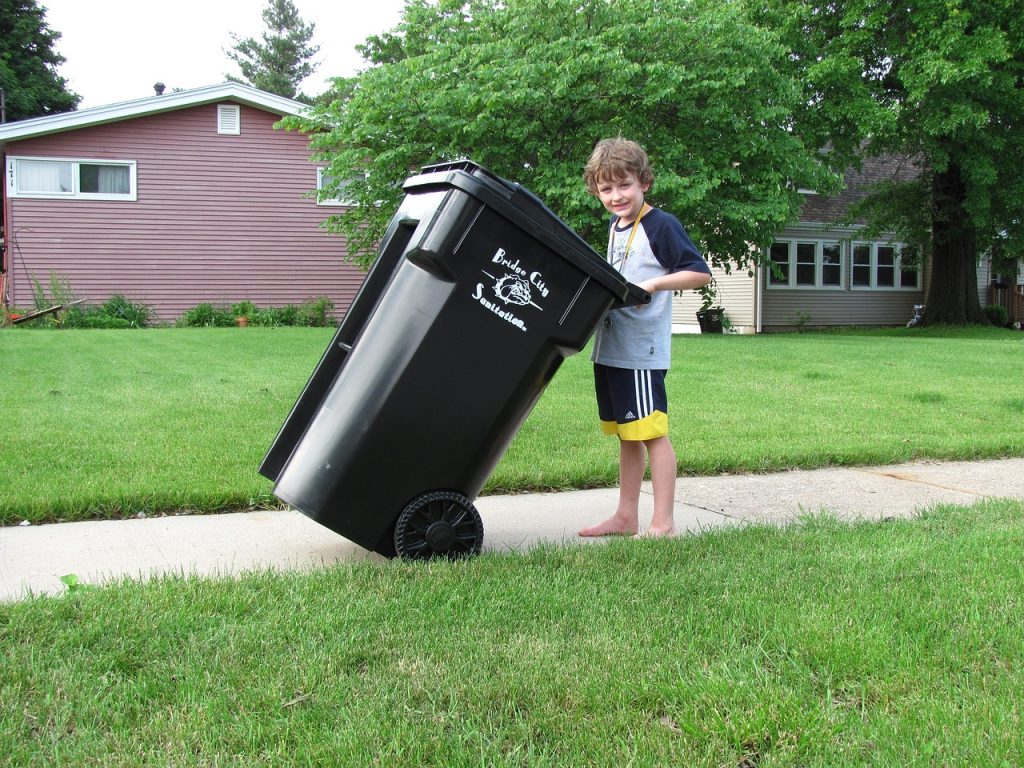
The effective management of recycling and waste requires a collaborative approach, where both community initiatives and governmental policies play critical roles. Together, they can create a supportive ecosystem that promotes sustainable waste management practices, encourages recycling, and fosters environmental stewardship. Here’s how community and governmental efforts complement each other in this vital endeavor.
Community Initiatives
Communities are the grassroots level at which the principles of waste reduction and recycling can be directly implemented. Community initiatives can take various forms, from local recycling programs and educational workshops to neighborhood clean-up campaigns and zero-waste initiatives. Here’s the impact of community efforts:
Grassroots Education: Communities can organize programs to educate residents about the importance of recycling, how to recycle correctly, and ways to reduce waste. These efforts can significantly improve recycling rates and reduce contamination in recyclables.
Local Recycling Programs: Tailored to meet the specific needs and capabilities of the community, local recycling programs can facilitate the convenient and effective collection of recyclables. Community composting programs, for example, can turn organic waste into valuable resources.
Community Engagement: Initiatives like community gardens, repair cafes, and swap meets not only promote sustainability but also foster a sense of community. Engaging residents in sustainability efforts can lead to more cohesive communities united by common environmental goals.
Governmental Policies
Governments at local, regional, and national levels have the authority to enact policies and regulations that can significantly influence waste management practices. Effective governance can establish the framework within which communities operate, providing the necessary support and resources for successful recycling and waste reduction efforts.
Legislation and Regulation: Governments can introduce laws and regulations that mandate recycling, restrict certain types of waste, and enforce the proper disposal of hazardous materials. Regulations can also target manufacturers, requiring them to take responsibility for the entire lifecycle of their products.
Funding and Resources: Governmental bodies can allocate funding for recycling infrastructure, such as collection services, sorting facilities, and recycling plants. Grants and subsidies can also support community initiatives and innovation in recycling technologies.
Public Awareness Campaigns: Governments can lead large-scale campaigns to raise awareness about waste issues and promote recycling. These campaigns can complement community efforts, amplifying their reach and impact.
Policy Incentives: Incentives such as tax breaks, deposit-return schemes, and penalties for non-compliance can encourage both businesses and individuals to adopt more sustainable practices.
Collaborative Efforts
The most effective waste management systems are those in which community initiatives and governmental policies are aligned and mutually supportive. Collaboration can ensure that community efforts are scalable and sustainable, while policies are informed by local needs and challenges.
Stakeholder Engagement: Involving communities, businesses, and environmental organizations in the policymaking process ensures that policies are practical and address the concerns of all stakeholders.
Integrated Waste Management Plans: Governments can work with communities to develop comprehensive waste management plans that incorporate recycling, waste reduction, and sustainable materials management, tailored to the local context.
Sustainable Practices for Businesses
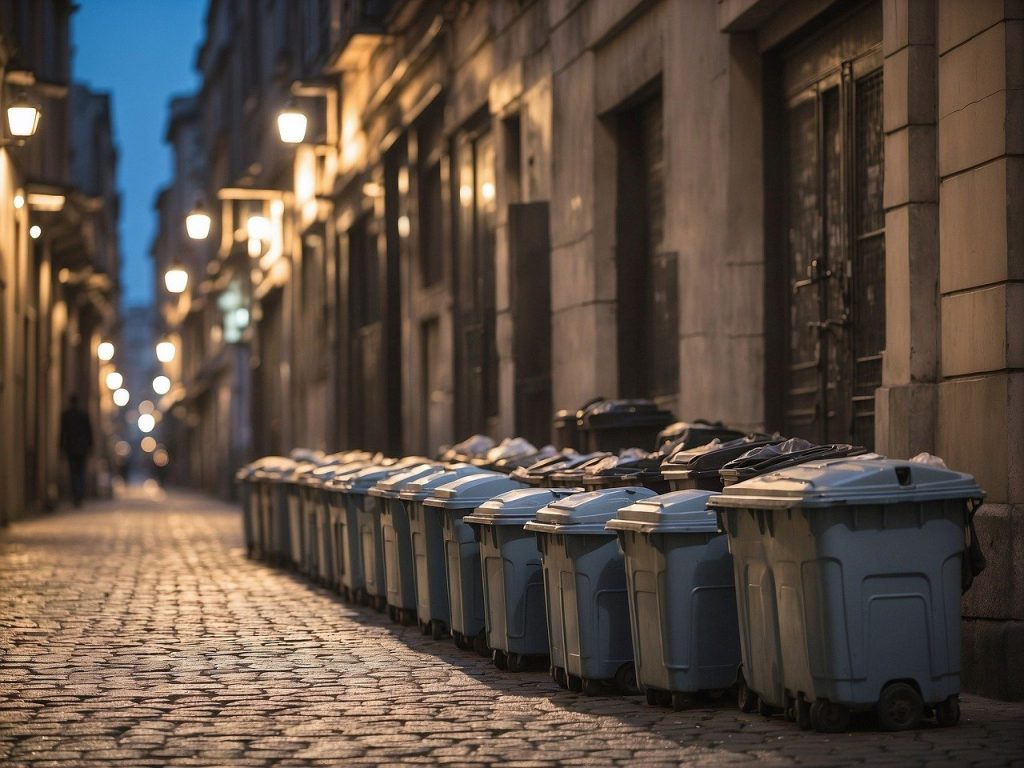
In the global effort to combat environmental degradation, businesses play a pivotal role by adopting sustainable practices. These practices not only contribute to environmental preservation but also offer economic and reputational benefits for the businesses themselves. Implementing sustainability into business operations can take various forms, from reducing waste and conserving resources to embracing circular economy principles. Here’s how businesses can integrate sustainability into their practices:
Resource Efficiency and Waste Reduction
Minimizing Waste: Businesses can significantly reduce their environmental impact by minimizing the waste they generate. This can be achieved through strategies such as designing products with less packaging, reusing materials, and implementing efficient production processes.
Recycling and Composting: Establishing recycling programs within the workplace for paper, plastics, metals, and organic waste can greatly reduce the amount of waste sent to landfills. For businesses that produce organic waste, composting can transform this waste into valuable soil amendments.
Sustainable Sourcing
Eco-friendly Materials: Choosing sustainable, recycled, or certified materials for products and packaging can decrease environmental harm. For example, sourcing Forest Stewardship Council (FSC) certified paper ensures that the material comes from responsibly managed forests.
Supplier Sustainability: Partnering with suppliers who also commit to sustainable practices can amplify a business’s impact. Assessing the environmental practices of suppliers and choosing those with green credentials can foster a more sustainable supply chain.
Energy and Water Conservation
Energy Efficiency: Implementing energy-efficient lighting, machinery, and heating, ventilation, and air conditioning (HVAC) systems can significantly reduce a business’s carbon footprint and energy costs.
Renewable Energy: Investing in renewable energy sources, such as solar or wind power, for business operations can further reduce environmental impact and offer long-term savings on energy bills.
Water Conservation: Businesses can adopt water-saving technologies and practices, such as low-flow fixtures and water recycling systems, to reduce water usage and conserve this precious resource.
Product Design and Lifecycle Management
Design for the Environment: Incorporating environmental considerations into product design, such as durability, repairability, and recyclability, can extend product lifespans and reduce environmental impact.
Extended Producer Responsibility (EPR): Taking responsibility for the entire lifecycle of a product, including its disposal, encourages businesses to design products that are easier to recycle or dispose of in an environmentally friendly manner.
Employee Engagement and Corporate Culture
Sustainability Training: Educating employees about sustainability and how they can contribute through their roles can empower them to make eco-friendly choices and innovations.
Green Corporate Culture: Fostering a workplace culture that values and rewards sustainable practices can motivate employees to participate in and advocate for environmental initiatives.
Transparency and Reporting
Sustainability Reporting: Publicly reporting on sustainability goals, initiatives, and progress can enhance transparency, build trust with consumers and stakeholders, and drive continuous improvement.
Barriers to Effective Recycling
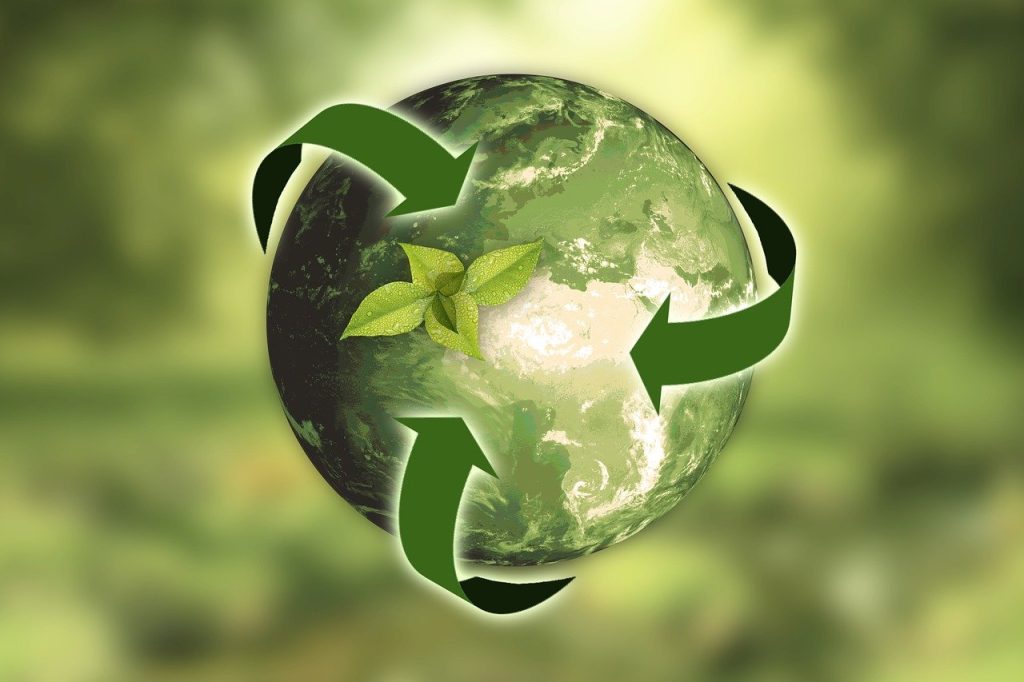
Effective recycling is crucial for environmental sustainability, yet it faces several barriers that hinder its efficiency and widespread adoption. These obstacles can be technical, economic, social, or regulatory in nature. Understanding these barriers is the first step toward overcoming them and enhancing recycling efforts worldwide.
Contamination in Recycling Streams
One of the most significant challenges to effective recycling is contamination. When non-recyclable items or materials not prepared correctly (e.g., food-contaminated containers) are mixed with recyclables, they can contaminate the entire batch, making it difficult or impossible to process. This not only reduces the quality and value of recyclable materials but also increases the cost of recycling operations.
Lack of Public Awareness and Education
A widespread lack of awareness and understanding about recycling processes, what can be recycled, and the importance of recycling contributes to low participation rates and high contamination levels. Without adequate education and clear, consistent messaging, individuals may become apathetic or skeptical about the benefits of recycling.
Inadequate Infrastructure
In many areas, recycling infrastructure is insufficient or outdated, limiting the types of materials that can be recycled and the efficiency of recycling processes. This includes a lack of collection services, sorting facilities, and advanced processing plants capable of handling complex materials. The investment required to upgrade or expand this infrastructure can be substantial, posing a significant barrier.
Economic Challenges
Recycling is often viewed as economically unviable, particularly when the cost of collecting, sorting, and processing recyclables exceeds the market value of the materials recovered. Fluctuating commodity prices can further exacerbate this issue, making it difficult for recycling programs to sustain themselves financially without subsidies or other forms of support.
Complexity of Materials
Modern products are increasingly made from complex combinations of materials, making them difficult to recycle. For example, electronics, multi-layer packaging, and composite materials pose significant challenges for recycling processes, often requiring specialized technologies or processes that are not widely available.
Regulatory and Policy Barriers
Inconsistent or lacking regulations across jurisdictions can create confusion and inefficiencies in recycling programs. Without strong regulatory frameworks that mandate recycling, enforce standards, and provide incentives for sustainable waste management practices, efforts to improve recycling rates may falter.
Global Inequities in Waste Management
Disparities in waste management and recycling infrastructure between developed and developing countries can lead to environmental injustices, where waste is exported from high-income to low-income countries, often with inadequate facilities to manage it properly. This not only exacerbates environmental and health issues in receiving countries but also hinders the development of local recycling industries.
